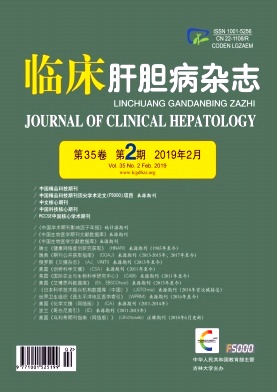Objective To investigate the changes in procoagulant and anticoagulant factors and routine coagulation markers in patients with hepatitis B cirrhosis and their clinical significance. Methods A total of 105 patients with hepatitis B cirrhosis who were admitted to Department of Infectious Diseases in The First Hospital of Lanzhou University from January 2017 to October 2018 were enrolled, and according to the Child-Pugh class, these patients were divided into group A ( 42 patients with Child-Pugh class A cirrhosis) , group B ( 39 patients with Child-Pugh class B cirrhosis) , and group C ( 24 patients with Child-Pugh class C cirrhosis) . Routine coagulation markers including prothrombin time ( PT) and activated partial prothrombin time ( APTT) , blood coagulation factors ( Ⅱ, Ⅴ, Ⅶ, Ⅷ, and Ⅺ) , anti-thrombin ( AT) , protein C ( PC) , and free protein S ( FPS) were measured for all patients. A one-way analysis of variance was used for comparison of continuous data between multiple groups, and the least significant difference t-test was used for further comparison between two groups; a Spearman correlation analysis was also performed. Results There were significant differences in PT and APTT between the three groups ( F = 55. 11 and 12. 09, both P < 0. 001) ; group C had significantly higher PT and APTT than groups A and B, and group B had significantly higher PT and APTT than group A ( all P < 0. 05) . There were significant differences in the activities of blood coagulation factorsⅡ, Ⅴ, Ⅶ, and XI between the three groups ( F = 32. 52, 14. 77, 38. 88, and 9. 24, all P < 0. 001) ; group C had significantly lower activities of these coagulation factors than groups B and A, and group B had significantly lower activities than group A ( all P < 0. 05) . There was a significant difference in the activity of blood coagulation factor Ⅷ between the three groups ( F = 4. 44, P < 0. 05) ; group C had a significantly higher activity than groups A and B ( P < 0. 05) , while there was no significant difference between group A and group B ( P >0. 05) . There were significant differences in the activities of AT, PC, and FPS between the three groups ( F = 25. 90, 30. 46, and 15. 58, all P < 0. 001) ; group C had significantly lower activities than groups B and A, and group B had significantly lower activities than group A ( all P < 0. 05) . The correlation analysis showed that Child-Pugh class was negatively correlated with blood coagulation factors Ⅱ, Ⅴ, Ⅶ, and Ⅺ and anticoagulant factors PC, FPS, and AT ( r =-0. 687, -0. 460, -0. 706, -0. 426, -0. 723, -0. 646, and-0. 468, all P < 0. 001) , and Child-Pugh class had the strongest correlation with blood coagulation factors Ⅱ and Ⅶ and the anticoagulant factor PC.Blood coagulation factors II and Ⅶ were positively correlated with the anticoagulant factor PC ( r = 0. 851 and 0. 745, both P < 0. 001) .Conclusion Patients with hepatitis B cirrhosis have reductions in both procoagulant and anticoagulant factors, and there is a significant correlation between them. An unstable balance may form in the body, which is not considered a conventional hypocoagulable state.







 DownLoad:
DownLoad: